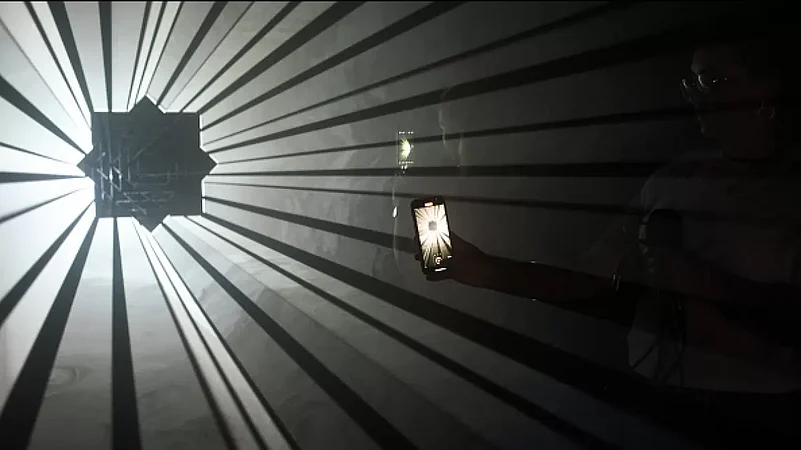The disturbing trend of degrading women on social media is not a new trend. Women have often found themselves at the receiving end of judgment, sexualisation, objectification, and blatant misogyny through content they create or content that’s targeted at them. The recent disturbing deepfake row has been yet another evidence of the same. It started with actor Rashmika Mandanna’s face being imposed on another woman’s body and later similar videos had the faces of Katrina Kaif and Kajol. Later, Sachin Tendulkar’s daughter Sara Tendulkar took to Instagram to share that she had come across her deepfake photos on social media.Responding to the video, Rashmika said, “Today, as a woman and as an actor, I am thankful for my family, friends and well-wishers who are my protection and support system. But if this happened to me when I was in school or college, I genuinely can’t imagine how could I ever tackle this.”Deepfakes use AI to create manipulated but realistic images and videos of real people in fake situations and are routinely used against women. A 2019 study by Sensity AI, a company that monitors deepfakes, stated that 96 per cent of deepfake images are pornography and non-consensual, and 99 per cent of those photos target women. Another study, cited by Vox, states that the top four websites dedicated to hosting deepfakes received a combined 134 million views on such videos. And on such websites, a full 100 per cent of the videos’ subjects were women — usually female celebrities having their likenesses swapped into sexually explicit porn videos without their knowledge or consent.These numbers reveal the rising urge to satisfy sexually driven fantasies using a woman’s body and stripping the same of its autonomy and dignity. And this dangerous trend of objectification shows how the internet is the flagbearer of perpetuating the deeply-rooted misogyny culture across spaces. Violating women online is a systemic issue and deepfake worsens it more.The rise of morphed videos of women goes on to show how deepfake videos can turn nightmarish for those targeted and put women even in a darker corner from coming out to the world. The woman, whose body and original video were used to create the deepfake of Rashmika also said, “I worry about the future of women and girls who now have to fear even more about putting themselves on social media.”Further, the modified features of a body expose a perverted dystopia that tends to bring down women to mere dimensions to appeal to the lecherous eyes. The waist grows narrow, the chest is enlarged with a sleek jawline and an hourglass figure -- giving an unrealistic version of how a woman should be or rather viewed by the men-dominated online space.Several reports also cite how dangerously harmful these deepfake videos can be when it comes to pornography and child exploitation, where they are now involuntarily involved due to AI. For law enforcement agencies who continuously scan the internet to identify victims of sexual abuse, the advancement of AI tools poses more difficult challenges to distinguish whether it involves a real person or a synthetic creation and whether the synthetic creation is partially based on a real individual.Adding on to this are the unregulated cyber laws or the inadequate implementation of the same. It’s no surprise that when it comes to reporting of cyber security, the hassle of emotional distress perhaps doubles with perpetrators of the same remain unaccountable. The cyber cell in India needs to be better where the legal course must go beyond registering the case and a mere investigation. How Deepfake Videos Leave Online Spaces Unsafe For WomenThe disturbing trend of degrading women on social media is not a new trend. Women have often found themselves at the receiving end of judgment, sexualisation, objectification, and blatant misogyny through content they create or content that’s targeted at them. The recent disturbing deepfake row has been yet another evidence of the same. It started with actor Rashmika Mandanna’s face being imposed on another woman’s body and later similar videos had the faces of Katrina Kaif and Kajol. Later, Sachin Tendulkar’s daughter Sara Tendulkar took to Instagram to share that she had come across her deepfake photos on social media.Responding to the video, Rashmika said, “Today, as a woman and as an actor, I am thankful for my family, friends and well-wishers who are my protection and support system. But if this happened to me when I was in school or college, I genuinely can’t imagine how could I ever tackle this.”Deepfakes use AI to create manipulated but realistic images and videos of real people in fake situations and are routinely used against women. A 2019 study by Sensity AI, a company that monitors deepfakes, stated that 96 per cent of deepfake images are pornography and non-consensual, and 99 per cent of those photos target women. Another study, cited by Vox, states that the top four websites dedicated to hosting deepfakes received a combined 134 million views on such videos. And on such websites, a full 100 per cent of the videos’ subjects were women — usually female celebrities having their likenesses swapped into sexually explicit porn videos without their knowledge or consent.These numbers reveal the rising urge to satisfy sexually driven fantasies using a woman’s body and stripping the same of its autonomy and dignity. And this dangerous trend of objectification of a woman’s body shows how the internet is the flagbearer of perpetuating the deeply-rooted misogyny culture across spaces. Violating women online is a systemic issue and deepfake worsens it more.The rise of morphed videos of women goes on to show how deepfake videos can turn nightmarish for those targeted and put women even in a darker corner from coming out to the world. The woman, whose body and original video were used to create the deepfake of Rashmika also said, “I worry about the future of women and girls who now have to fear even more about putting themselves on social media.”Further, the modified features of a body expose a perverted dystopia that tends to bring down women to mere dimensions to appeal to the lecherous eyes. The waist grows narrow, the chest is enlarged with a sleek jawline and an hourglass figure -- giving an unrealistic version of how a woman should be or rather viewed by the men-dominated online space.Several reports also cite how dangerously harmful these deepfake videos can be when it comes to pornography and child exploitation, where they are now involuntarily involved due to AI. For law enforcement agencies who continuously scan the internet to identify victims of sexual abuse, the advancement of AI tools poses more difficult challenges to distinguish whether it involves a real person or a synthetic creation and whether the synthetic creation is partially based on a real individual.Adding on to this are the unregulated cyber laws or the inadequate implementation of the same. It’s no surprise that when it comes to reporting of cyber security, the hassle of emotional distress perhaps doubles with perpetrators of the same remain unaccountable. The cyber cell in India needs to be better. It must end with conviction which remains abysmally low in India's legal take on cyber crime.
How Deepfake Videos Leave Online Spaces Unsafe For Women
Data reveals the rising urge to satisfy sexually driven fantasies using a woman’s body and stripping the same of its autonomy and dignity. And this dangerous trend of objectification shows how the internet is the flagbearer of perpetuating the deeply-rooted misogyny culture across spaces.

Several artists and scientists worked together to ask 'What is reality?
Several artists and scientists worked together to ask 'What is reality?
Published At:
- Previous Story
 BJP To Take Strict Measures Against Infiltration If Brought To Power: PM Modi At Bengal Rally
BJP To Take Strict Measures Against Infiltration If Brought To Power: PM Modi At Bengal Rally - Next Story
MOST POPULAR
WATCH
MORE FROM THE AUTHOR
PHOTOS
×





















